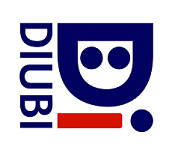


BiNaCom: Development of Secure and Reliable Techniques for Data Communication
Accepted: May, 2017
Duration: 2 years
Funded by: University "Goce Delcev" in Stip
Modern man hangs out on the Internet, listen to radio and watch movies from the Internet, read electronic books and newspapers, books flights and hotels through the Internet, makes electronic transactions, etc. The cyber security and privacy of people are constantly threatened and adversaries constantly found new means of attacking, eavesdropping, communicating and coordinating their malicious actions.
This project targets several different aspects of security and reliability in data communication.
Two activities are associated with digital steganography, and their goal is discovering of new covert channels in the new web transfer protocols, such as HTTP/2 and QUIC, as well as using new anti-steganographic techniques for digital images in order to prevent terrorists to use them for hidden communication. The ultimate goal is to obtain a modular tool that would use the cloud storage services and web applications that provide a public service for images.
Several other activities are related to cryptography, and include the development of optimal 8x8 S-boxes from small quasigroups of order 4 or 16, or from binary quasi-cyclic codes; development of an E-voting system using Bitcoin technology; development of Hill cipher cryptosystem with CSPRNG, and parallel realisation of some cryptographic algorithms related to cryptographic measures for S-boxes.
One activity involves the analysis and processing of data obtained by testing computer and network security or network monitoring, by using algorithms from artificial intelligence.
Regarding reliability, algorithm design is planned, for finding a minimal path and cut vectors for multi-state networks.
Project Goals
1. Finding new covert channels in network protocols
Last years, network steganography or hiding data in network protocols, is rapidly expanding. A covert channel is any communication channel that can be exploited by a process to transfer information in a manner that violates the system's security policy. Network-based covert channels can be used illegally to coordinate distributed denial of service attacks or spreading of malware (e.g., the worm W32.Morto used DNS records to communicate with its command and control server), for secret communication between terrorists and criminals, industrial espionage, but also legally, for circumvention of the limitation in using Internet in some countries (e.g., Infranet), secure network management communication, copyright protection, etc. Covert channels in the network protocols most often use modification of the protocol header and/or payload (Protocol Data Unit - PDU), or modification of the the structure of PDU streams.
2. Development of anti-steganographic techniques for digital images
Hiding messages in digital images placed on public services on the Internet is a well known way of conveying a secret communication between terrorists and criminals in the world. Steganalysis, the detection of this hidden information, is an inherently difficult problem and requires a thorough investigation.
Our goal is not to find if there is a hidden information in a given image, but to destroy the hidden message and to make it unusable, in the moment of the image uploading on the Internet.
3. Development of several cryptographic solutions
3.1. S-boxes have a fundamental role for the security of modern block ciphers because they are usually the main non-linear part in the block ciphers. Optimal S-boxes can make the cipher resistant against various kinds of attacks. The goal is to obtain an optimal 8x8 S-boxes from small quasigroups of order 4 or 16, or binary quasi-cyclic codes. We will investigate differential and linear characteristics of produced S-boxes.
3.2. Bitcoin started a new era of digital currencies, with its building blocks and underlying concepts finding new applications in different areas nowadays (e.g., blockchain technology is used to build secure logs). The goal of this task is to study if a secure e-voting system can be designed resorting to Bitcoin technology, and also to define the procedures and usage protocol that may guarantee the main security and functional requirements of such system. A prototype of the system is expected by the end of the task.
3.3 The Hill cipher is nowadays considered one of the examples of classical cryptography. This substitution cipher was defined in 1929 by Lester S. Hill , but it has been the subject of some more recent publications, which aim to solve its weaknesses. The goal of this activity is an analysis of the usage of a Cryptographically Secure Pseudo-Random Number Generator (CSPRNG) to generate the matrix key of the Hill cipher for every plaintext block submitted to encryption.
4. Algorithm design for finding minimal path and cut vectors for multi-state networks
Our research will be focused on development of the algorithms for finding minimal path vectors in two terminal network with lower time complexity from existing algorithms. New algorithms will be based on recent theoretical results, to improve the method for computation of d-MP candidates.
Also, programs for the algorithms will be implemented. By using them we will make comparison of execution times of algorithms, therefore theoretical results that we obtained also will be experimentally proved.
5. Computer and network security tests data acquisition and data processing
For this activity, data obtained by network sniffing and scanning, log-files, and etc, will be analyzed with different artificial intelligence algorithms.
6. Parallel implementation of fast (butterfly) algorithms
Publications
People
 |
Aleksandra Mileva, PhD, Principal Researcher Faculty of Computer Science, University Goce Delcev in Stip, Macedonia |
aleksandra(dot)mileva(at)ugd(dot)edu(dot)mk |
|---|---|---|
 |
Pedro R. M. Inácio, PhD, Researcher Faculty of Engineering, University of Beira Interior, Portugal |
inacio(at)di(dot)ubi(dot)pt |
 |
Stefka Bouyuklieva, PhD, Researcher Faculty of mathematics and informatics, University of Veliko Turnovo “St Cyril and St. Methodius”, Bulgaria |
stefka(at)uni-vt(dot)bg |
 |
Natasha Stojkovikj, PhD, Researcher Faculty of Computer Science, University Goce Delcev in Stip, Macedonia |
natasa(dot)maksimova(at)ugd(dot)edu(dot)mk |
 |
Done Stojanov, PhD, Researcher Faculty of Computer Science, University Goce Delcev in Stip, Macedonia |
done(dot)stojanov(at)ugd(dot)edu(dot)mk |
 |
Dusan Bikov, MSc, Junior Researcher Faculty of Computer Science, University Goce Delcev in Stip, Macedonia |
dusan(dot)bikov(at)ugd(dot)edu(dot)mk |
 |
Biljana Dimitrova, BSc, Junior Researcher Faculty of Computer Science, University Goce Delcev in Stip, Macedonia |
biljana(dot)dimitrova(at)ugd(dot)edu(dot)mk |